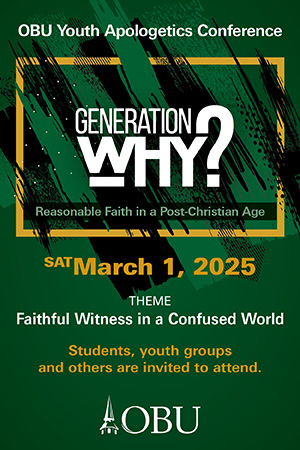
USPHS officers are all smiles as they pick up breakfast supplied by BGCO disaster relief volunteers, including feeding team Blue Cap Dean Kiser, show at left, during the Remote Area Medical clinic's first morning, July 9. (PHOTO: BOB NIGH)
When Dean Kiser heard about the July 9-11 Remote Area Medical clinic at the Oklahoma State Fairgrounds, he saw it as another opportunity to serve the Lord.
When Kimberly Elenberg learned she was coming to Oklahoma City to participate in the event, she recognized it as an important training exercise for her troops.
Both Kiser, Blue Cap for the Oklahoma City BGCO disaster relief feeding crew, and Elenberg, a Captain with the U.S. Public Health Service Commissioned Corps in the Office of the Surgeon General in the Washington, D.C. area, spent those three days helping hundreds of people.
Kiser led BGCO disaster relief volunteers, who prepared meals for hundreds of other volunteers who provided free medical and dental care to Oklahomans on a first-come, first-served basis.
Elenberg, a pediatric nurse by trade, lead a contingent of 79 USPHS officers who converged on the city from around the country. She operates specifically out of the Office of Force Readiness and Deployment in Rockville, Md.
“The mission of the Public Health Service is to protect, promote and advance the health of the nation,” Elenberg said. “That’s our duty.”
She said the RAM clinic was an excellent training opportunity for her officers.
“When you look at training people effectively, when people learn from books, they retain the information for (only) a certain period of time. When people learn from any kind of a simulation training, it seems to be even more effective, but when you train with a purpose, then it really helps it to stick,” she explained.
“Our officers are stationed all across the country working as physicians, environmental health officers and epidemiologists in their repsective jobs, and they come together once or twice a year to train as teams or units and when they do their team training, I like to emulate what they’ll do on an actual deployment.
“Because you have your seasoned officers working with newer officers, it gives the younger ones the opportunity to experience what a deployment might be like. This type of event is valuable in helping them to determine how to set up an alternative care facility. They get experience in how to manage crowd control and to do traige effectively; those things they’ll face when an actual event occurs.
“It’s also a chance to build a unified command, which is very important, because when you deploy, it takes non-government organizations working closely with local, county and state assets to learn how to work together,” she pointed out. “Issues include how do you communicate well, and who is in charge when all of these different entities come together in response?”
The USPHS, which was organized in 1798, has more than 6,500 officers, all of whom carry U.S. Navy rank, nationwide. Some of them who came to Oklahoma City were very experienced, Elenberg said, including those who served in Colombia, on the Hospital Ship Comfort, after the Sept. 11, 2001 terrorist attacks, in Banda, Ache, Indonesia after the Tsunami in 2004 and after hurricanes Katrina, Ivan and Rita in the United States.
“So, you can see we have some who are very, very experienced,” Elenberg said, adding with a smile, “Then, there are some who are brand new and didn’t know to bring a rope to string up to hang a towel on to dry or to bring flip flops to wear in the shower!”
Experienced or novice, Elenberg said she expects each officer benefitted from the event, and the next step is evaluation of the exercise.
“We’ll evaluate the effect of the training, not just that it is effective for the troops, but we want to understand the impact on the community,” she said. “We don’t want to have unintended consequences where our training would ever burden a community, so we work with a community afterwards to measure not just output—the number of patients seen—but outcome.”
Meanwhile, Kiser, a veteran of countless trips in response to disasters, knows that the effort to get up in the wee hours of the morning and lead a team of dedicated volunteers to provide hot meals to the volunteers who, themselves, had to be on the job early in order for the clinics to begin welcoming patients at 6 a.m. each day was well worth it.
But, you could probably ask the estimated 1,700 people who received free medical, dental and eye care during the three-day clinic what they think about that. No doubt they would agree.
The RAM clinic was sponsored by Remote Area Medical Volunteer Corps, which was, founded in 1985 by Stan Brock, former co-star of the television series, “Wild Kingdom,” to air-drop supplies and deliver medical care to remote areas of Central and South America.
Bethany, Council Road also sponsored some of the meals prepared by the BGCO’s disaster relief volunteers.
Oklahoma was the sixth state to host a RAM clinic, and future RAM events will be held in other parts of the state, organizers indicated.





